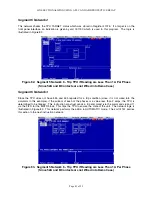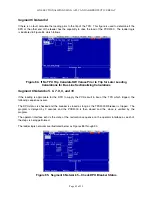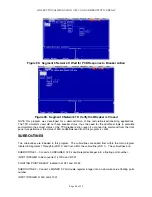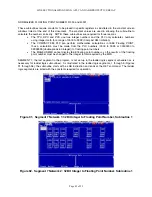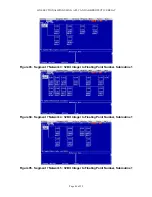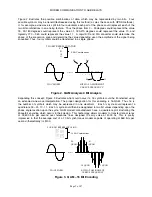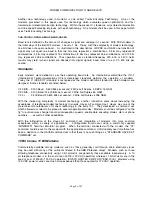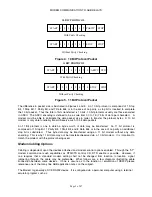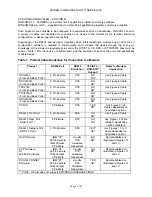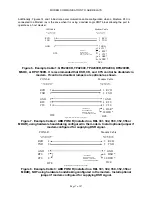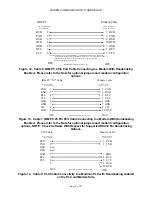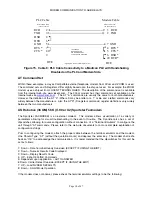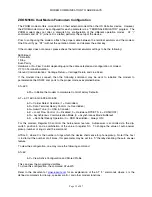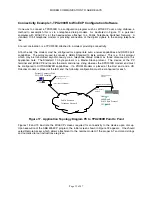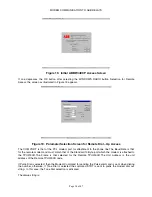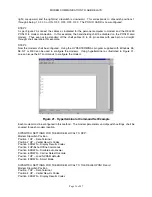
MODEM COMMUNICATION TO ABB RELAYS
Page 1 of 47
Modem Communications to ABB Relays
REV 1.0 12/07/2000
ABSTRACT
: Advances in telephony switching systems and semiconductor technologies have made
digital communication via analog public telephone systems an affordable reality. Advances from the initial
Bell 202 modems operating at speeds of 300 baud to modern day V.90 modems which can theoretically
operate at 56K have made fast data transfer within a substation a reality. This paper explains the theory
of modern day modems and their use with ABB protective relays and configuration software. Although
many manufacturers of modem equipment are available, this application note covers the theory and
application of 10 bit dial-up telephone modems. ABB does not specify specific modem vendors
equipment, this application note is to be a guide to configuration of general vendor’s telephony equipment
with various ABB products. This application note is intended to present four examples of modem
connectivity between ABB products and a personal computer.
Modem Theory
EARLY MODEMS
In the beginning, telephony operated using analog signals. The legacy public telephone network required
that the standard Bell Telephone. Signals placed upon the telephone network consisted of voice
communication. The channels were limited (which led to the creation of the party-line) and
communication consisted of much dead time in which no activity was occurring on the expensive phone
connection.
When digital computers were evolving, there came a need to interconnect the various sites for a limited
period of time. Expensive digital data exchange networks were available for device interconnection.
Installation of these systems for limited use was impractical due to installation costs but also for their
operational costs. Some systems (such as ARPA net [precursor to the internet]) were available but only
to the military and select universities. Another method had to be developed to allow general industries to
communicate via a public medium.
It was widely known that Analog signals have three distinct characteristics.
a.
Frequency (which may be varied and measured in communication systems).
b.
Amplitude (which may be increased decreased).
c.
Phase (which may be shifted with respect to a particular reference at any time).
Engineers at Western Electric (the R&D arm of Bell Telephone) took advantage of these characteristics of
an analog signal and created a device called a modem. MO – MODULATOR: DEM – DEMODULATOR.
The public telephone network communication channel was able to carry signals from 300 Hz to 4,000 Hz.
The modem translated the signal from a digital waveform to an analog waveform (modulator) and
transferred it to a telephone line analog grade signal. Figure 1 illustrates this transformation. The
receiving modem translated the analog signal to a digital signal (demodulator). Thus the initial methods of
communicating were developed to use the operating analog bandwidth of the telephone systems. The
physical interface employed for the digital interface was a recently specified RS232 interface. For a more
in depth explanation of RS232, please reference other application notes available from ABB’s FAXBACK
service or WEB Site.
Содержание REL 356
Страница 23: ...ABB REL 356 Current Differential Protection 1 10 Product Overview and Specifications ...
Страница 83: ...ABB REL 356 Current Differential Protection 3 36 Settings and Application ...
Страница 127: ...ABB REL 356 Current Differential Protection 5 28 Testing ...
Страница 186: ...LINE SECTIONALIZING USING A PLC AND ABB PROTECTIVE RELAY Page 49 of 53 ...
Страница 187: ...LINE SECTIONALIZING USING A PLC AND ABB PROTECTIVE RELAY Page 50 of 53 ...
Страница 188: ...LINE SECTIONALIZING USING A PLC AND ABB PROTECTIVE RELAY Page 51 of 53 ...
Страница 189: ...LINE SECTIONALIZING USING A PLC AND ABB PROTECTIVE RELAY Page 52 of 53 ...


